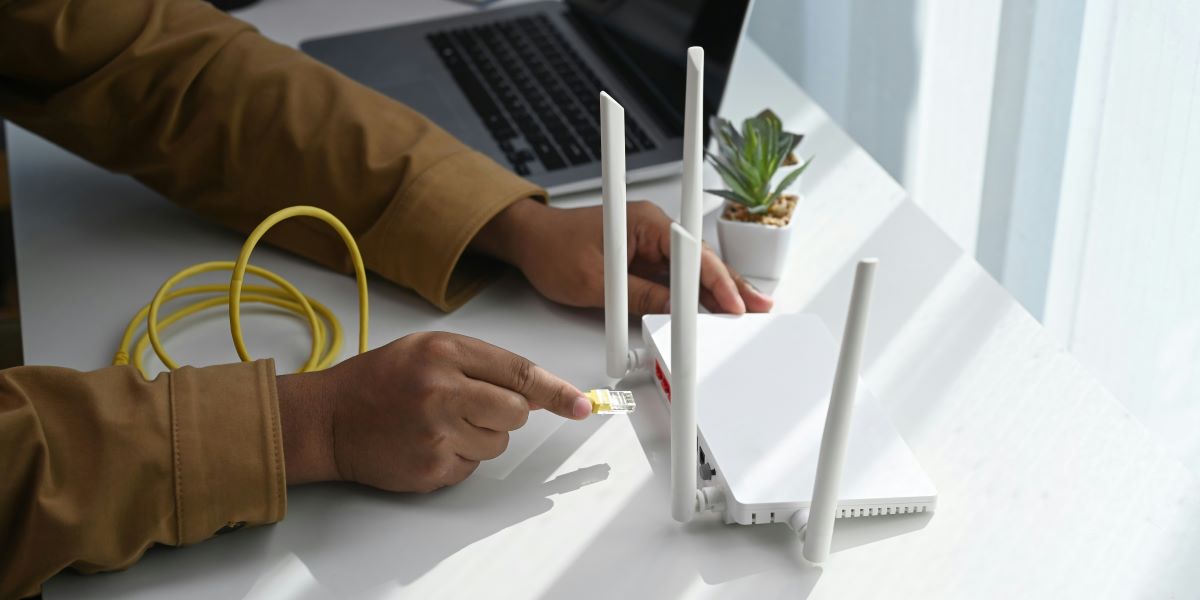In today’s hyper-connected world, a stable Wi-Fi connection is essential for everything from remote work and online learning to streaming entertainment and smart home functionality. Yet, despite its central role in daily life, Wi-Fi remains one of the most common sources of household frustration. Slow speeds, dropped connections, and dead zones can disrupt productivity and leisure alike, often without warning.
Fortunately, most Wi-Fi connectivity issues can be resolved without technical expertise or costly upgrades. By understanding the basics of how wireless networks operate and applying a few practical adjustments, users can significantly improve their home internet experience.
Restarting and Repositioning: The First Line of Defense
The most straightforward solution to Wi-Fi problems is often the most effective: restarting the router and modem. Power cycling these devices clears temporary glitches, refreshes the connection, and restores normal speeds. Users should power off both units, wait at least 30 seconds, and then turn them back on. This simple step can resolve a surprising number of connectivity issues.
Router placement is equally important. Wi-Fi signals are strongest when unobstructed, and their reach can be compromised by thick walls, metal surfaces, or large furniture. Positioning the router in a central, elevated location, such as on a shelf or table, helps distribute the signal more evenly throughout the home. Avoid placing routers near microwaves, cordless phones, or other electronics that may interfere with the signal.
In multi-story homes, placing the router on the middle floor can help ensure coverage across all levels. For apartments, placing the router away from exterior walls and closer to the center of the unit can reduce signal loss.
Managing Bandwidth and Reducing Interference
Modern households often connect dozens of devices to a single network. Smartphones, laptops, smart TVs, tablets, gaming consoles, and smart appliances all compete for bandwidth. When too many devices are active simultaneously, the network can become congested, leading to slower speeds and dropped connections. Disconnecting unused devices or scheduling bandwidth-heavy activities during off-peak hours can help alleviate strain.
Interference from other electronics is another common issue. Devices such as Bluetooth speakers, baby monitors, and fluorescent lights operate on frequencies that may conflict with Wi-Fi signals. In densely populated areas, overlapping networks from neighboring units can further complicate connectivity. Adjusting the router’s channel settings, either manually or through automatic optimization, can reduce interference and improve stability.
Dual-band routers offer additional flexibility by allowing devices to connect to either the 2.4 GHz or 5 GHz frequency. The 2.4 GHz band offers broader coverage but is more susceptible to interference, while the 5 GHz band provides faster speeds over shorter distances. Assigning devices strategically to each band can help balance the load and improve overall performance.
Updating Software and Firmware
Outdated software is a frequent source of connectivity problems. Ensuring that all connected devices are running the latest operating systems and network drivers helps maintain compatibility and performance. Routers also require regular firmware updates, which can be accessed through their browser-based settings interface. These updates often include security patches, bug fixes, and performance enhancements.
For households using older routers, upgrading to a newer model may be necessary. Modern routers support advanced features such as beamforming, MU-MIMO (multi-user, multiple-input, multiple-output), and mesh networking, all of which contribute to stronger, more reliable connections. Investing in updated hardware can resolve persistent issues and future-proof the home network.
Running Speed Tests and Identifying Service Issues
When Wi-Fi problems persist despite internal adjustments, the issue may lie with the internet service provider. Running a speed test allows users to compare actual performance against their subscribed plan. If speeds are significantly lower than expected, contacting the provider may be warranted. Service outages, maintenance work, or network throttling can affect connectivity even when home equipment is functioning properly.
Speed tests also help identify dead zones, areas in the home where the signal is weak or nonexistent. These zones may benefit from Wi-Fi extenders or mesh systems. Extenders rebroadcast the signal to reach farther areas, while mesh systems use multiple nodes to create a seamless network across larger spaces. Both solutions can improve coverage and reduce frustration in homes with complex layouts or thick walls.
Resetting Network Settings and Restoring Defaults
If individual devices continue to struggle with connectivity, resetting their network settings may help. Forgetting the Wi-Fi network and reconnecting allows the device to establish a fresh connection, resolving authentication errors and IP conflicts.
In more persistent cases, restoring the router to factory settings may be necessary. This process erases custom configurations and returns the device to its original state. While it requires re-entering network names and passwords, it can eliminate deeper issues that other troubleshooting steps do not address. Users are advised to back up important settings before performing a factory reset.
Recognizing the Limits of Wi-Fi
While Wi-Fi offers convenience, it is not without limitations. Signals weaken over distance and through physical barriers. Activities such as streaming high-definition video, gaming online, or attending virtual meetings require a strong and stable connection. For critical tasks, using a wired Ethernet connection can provide greater reliability and speed.
Network performance may also fluctuate based on time of day. During peak hours, when many users are online simultaneously, speeds may decrease due to congestion. Scheduling large downloads or updates during off-peak times can help mitigate this issue.
Additionally, users should be aware of their internet plan’s limitations. Some service tiers may not support the demands of multiple simultaneous users or high-bandwidth activities. Upgrading to a higher-speed plan may be necessary for households with heavy usage.
Small Adjustments, Big Improvements
Improving Wi-Fi connectivity at home does not require expensive gear or advanced technical knowledge. Simple steps, such as repositioning the router, disconnecting unused devices, updating firmware, and running speed tests, can lead to noticeable improvements in performance.
For households balancing remote work, online education, and digital entertainment, a stable internet connection is essential. While Wi-Fi issues are common, they are rarely insurmountable. With a few thoughtful adjustments, users can transform their home network into a reliable foundation for daily life.
As digital dependence continues to grow, understanding how to maintain and optimize a home Wi-Fi network becomes increasingly important. These practical solutions offer a starting point for anyone seeking to resolve connectivity issues and restore seamless access to the online world.











